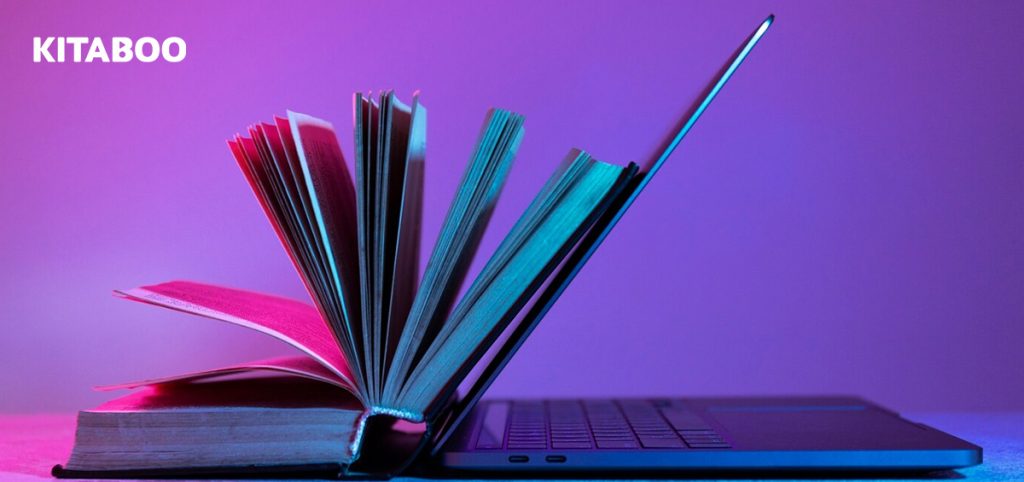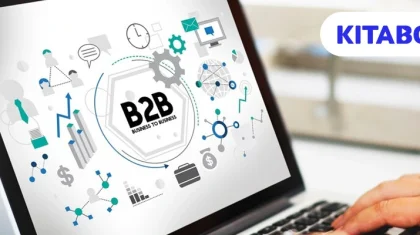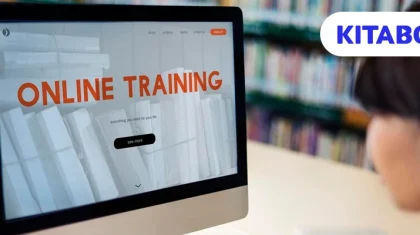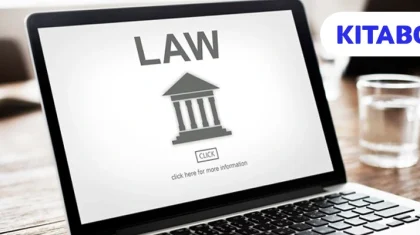
How Digital Textbooks and Instructional Books Can Enhance Your Learning Experience
The advent of digital textbooks has truly transformed the landscape of learning. Today, we are equipped with a powerful tool that can enhance our learning experiences in ways we never thought possible.
But how did they come into existence?
The era of simple digital textbooks began in 2004 in Texas when the Forney School District adopted a pilot program to provide fifth and sixth-grade students with digital textbooks.
Then, in about 2003, when actor Arnold Schwarzenegger was the governor of California, he launched a “Digital Textbook Initiative” to reduce textbook expenses and provide students with current information.
A couple of decades later, the meaning of digital textbooks and instructional books has evolved, but the core purpose remains the same. To provide rich, relevant, and cost-effective education.
Platforms like KITABOO have been holding the baton for this shift, helping K12 publishers, educational institutions, and associations with cutting-edge digital textbooks with end-to-end solutions.
Table of Contents
I. What are Digital Textbooks and Instructional Books?
II. How Digital Textbooks and Instructional Books Enhance the Learning Experience: 5 Ways
- Higher Engagement through Interactive Learning and Multimedia Integration
- Facilitation of Self-Paced Learning with Assessments
- Elevated Classroom Experience through Blended and Structured Learning
- Consistent, On-Demand and Active Learning
- Better Grasp of Complex Topics and In-Depth Learning
III. Characteristics of Quality Digital Textbooks and Instructional Books
What are Digital Textbooks and Instructional Books?
Digital textbooks are electronic versions of traditional textbooks that can be accessed on a variety of devices, such as computers, laptops, tablets, and smartphones. They offer a number of advantages over traditional print textbooks.
Instructional books are books that provide instructions on how to do something. Digital instructional books are electronic versions of instructional books that teach users how to do something. They are often written in a clear and step-by-step format, making them easy to follow.
Digital textbooks and instructional books are electronic textbooks that provide material for pedagogy in text as well as other formats. These include:
- Videos
- Animations
- Graphics
- Photographs
- Audio, etc.
Digital textbooks are created in formats like ePUB, docx, PDF, etc. They find themselves at the center of technology reform in the education space.
How Digital Textbooks and Instructional Books Enhance the Learning Experience: 5 Ways
Digital textbooks and instructional books offer a variety of benefits over the conventional ones. They can enhance the learning experience and provide comprehensive information.
Here are some of the benefits they offer:
1. Higher Engagement through Interactive Learning and Multimedia Integration
Digital textbooks and instructional books provide the option of multimedia integration, like colorful graphics, embedded videos, and hyperlinks. They also offer the experience of “flipping pages” and contain quizzes for interaction.
For example, the digital textbooks created by KITABOO, a digital textbook platform, can integrate a forum where educators and learners can discuss topics, ask questions, etc.
Additionally, a study found that multimedia elements can enhance understanding and increase student motivation and engagement.
2. Facilitation of Self-Paced Learning with Assessments
Because there is no time constraint to complete a course along with everyone else, digital textbooks maximize self-paced learning. They come with advanced search and navigation features, allowing learners to dive deeper into a topic or revise on time.
They can also be personalized to adjust to the learner’s pace and preferences. Digital textbooks and instructional books are also accessible and inclusive, offering multi-device support and non-visual learning opportunities.
Their note-taking, highlighting, bookmarking, font adjustment and other features are impressive. The cutting-edge tools offered for digital textbooks, like progress tracking and self-assessment, are helpful, too.
3. Elevated Classroom Experience through Blended and Structured Learning
Along with being used solely for online learning, digital textbooks aid students and teachers in a blended classroom experience.
As they are interactive and intuitive due to multimedia elements, they often have higher student participation than conventional textbooks. This is because it has collaborative capabilities even if the students are not sharing the same physical space. They also allow teachers to customize instruction for better results.
A digital textbook, like a conventional one, also contains the teaching material in a structured, sequential, and comprehensive manner. This enhances the learning process through organization and prevents confusion.
Another advantage a textbook offers is that it can be updated frequently, making it the ideal tool for imparting relevant and dynamic education.
4. Consistent, On-Demand and Active Learning
One of the most effective ways through which instructional books have enhanced learning is by offering convenience, along with the liberty to learn anytime, anywhere.
Considering different sleep schedules and productivity times for each individual, they also allow for on-demand learning, ensuring consistency without breaking the flow.
Textbooks today offer scenario-based learning, gamification, analytics-powered decision-making to bridge knowledge gaps faster, etc. This encourages active learning, leading to higher retention, as stated by the findings of a study.
5. Better Grasp of Complex Topics and In-Depth Learning
The use of multimedia elements, like videos, makes it easy to visually imagine a concept in one’s mind, often breaking it down into one image or a short video compared to multiple paragraphs of just text.
Hyperlinks and additional resources let a learner dive deeply into a topic that piques their interest to get a deeper understanding.
Digital textbooks and instructional books can be used as guides or for revision at any point in time innumerable times. This aids in a more thorough compression of topics, too.
Characteristics of Quality Digital Textbooks and Instructional Books
A digital textbook that can enhance your learning experience will have the following traits:
- It is interactive, offering assessments, quizzes, and platforms for discussion.
- It is intuitive, adapting to multiple platforms and devices effortlessly.
- It has rich multimedia integration.
- It offers advanced analytics to track progress and personalize the learning experience.
- It offers constant updates to stay current and accurate.
- It is accessible and inclusive, promoting ease of learning.
The Digital Textbook Revolution
It might not be too late with prestigious educational institutions shifting towards digital textbooks. Explore many benefits like active learning, higher retention, increased motivation, better comprehension, etc.
They allow the learner to take control of their journey, opening the doors for personalized learning. Create digital textbooks and instructional books and tap into the power of technology for effective learning.
KITABOO is a state-of-the-art digital textbook platform offering everything under one roof, from creation to distribution. You can leverage the power of AI and an expert team with a high-scale platform that has created one million+ ebooks and is deployed in 30+ countries.
Explore KITABOO. Connect with our experts for further details!
To know more, get in touch with us at contact@kitaboo.com.
Suggested Reads:
Discover how a mobile-first training platform can help your organization.
Kitaboo is a cloud-based platform to create, deliver & track mobile-first interactive training content.



